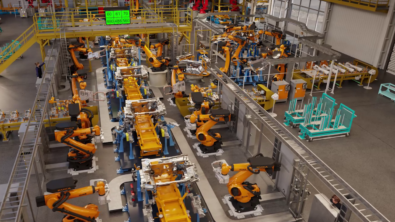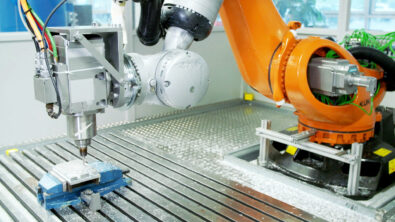Talking Aerospace Today – The 5 Levels of Digital Transformation Maturity – Summary

In the first episode of the Talking Aerospace Today podcast’s new series on digital transformation maturity, Todd Tuthill, Vice President of Aerospace and Defense (A&D) at Siemens Digital Industries Software, explained how the A&D industry is suffering from a severe shortage of aerospace engineers. The solution, he says, is for companies to increase their digital transformation maturity.
Now, in the recently released second episode, Todd reveals what a mature digital transformation journey looks like as five levels: configuration, connection, automation, generative design, and closed-loop optimization. While some of these levels may sound far off, the reality is the tools to bring these capabilities into reality are already out there, and the A&D industry is already making strides in their efforts into maturing their digital transformations.
How mature is the industry now?
Most if not all A&D companies have already made headway into the earliest stages of digital transformation maturity, configuration. This first stage is the ability to capture and store data, along with attaching metadata to it for easy reuse later. It can be helpful if engineers ever need to find that data again two to three years down the line, or so companies can validate their products’ airworthiness to certification authorities. The A&D industry has been digitalizing their data storage systems for years, giving companies the ability to move forward on their digital transformation journeys.
Fortunately, companies are also well on their way into the next step: connection. Where configuration is about storing data, connection is about linking individual pieces of data together and increasing their traceability. This is especially crucial in the A&D industry where products are complex and incorporate multiple systems and numerous components that impact each other’s designs and functions. Design changes are constant, so being able to track how changes in one system influence another can greatly accelerate getting products off the ground.
To see how the A&D industry is increasing its connective capabilities, check out this CIMdata report on digital threads.
Advanced digital transformation
The latter half of digital transformation is where things really get exciting, and it begins with automation. One of the biggest drivers behind the workforce shortage is there is too much data to process, requiring more engineers than if the workload was purely devoted to actual engineering. Automation is about shifting the responsibility of mundane tasks like data processing from people to computers, granting engineers more time to be creators and innovators and multiplying their impact. This is only the beginning, however. As time goes on, automation can be used to make more and more engineering processes virtual, continually reducing the amount of physical work engineers need to do.
Generative design is the next stage, as well as the introduction of artificial intelligence (AI) and machine learning (ML) to the digital transformation journey. This is where design tools can design products themselves by learning from a company’s pool of data and applying that information to create something based on input requirements. Of course, this would not be used to generate entire aircraft or spacecraft from get go. It would begin with small parts, but as the technology advances, it could grow to design larger and larger systems and products.
The last step, closed-loop optimization, is a significant advancement of generative design. It is the stage where AI can generate thousands of designs, then evaluate those designs with a set of key performance indicators through simulation. Based on the results, the best-performing set of designs would be automatically selected and presented to human engineers, who would select the final design. By performing thousands of design evaluations in the virtual world, A&D companies can produce fully optimized aircraft and spacecraft designs far more rapidly than with physical testing.
Today meets tomorrow
Digital transformation maturity, especially the latter stages, may sound like far off science-fiction, but it is not so far as one would think. Many software tools the industry uses now are capable of some of the things described here, such as automating mundane processes, generative design, and design optimization. That said, they tend to perform these tasks within a single engineering domain and are very far from designing and optimizing entire aircraft and spacecraft, let alone complex systems.
Yet big journeys begin with small steps. With A&D companies pushing past configuration and through connection, the next levels of digital transformation will soon be within reach. The A&D industry is facing significant challenges today, but if companies continually work to mature their digital transformations, even the sky will no longer be the limit.
Listen to the full episode or read the transcript for more on digital transformation maturity. Stay tuned for future episodes where we explore the individual levels in more depth, beginning with automation.
Siemens Digital Industries Software helps organizations of all sizes digitally transform using software, hardware and services from the Siemens Xcelerator business platform. Siemens’ software and the comprehensive digital twin enable companies to optimize their design, engineering and manufacturing processes to turn today’s ideas into the sustainable products of the future. From chips to entire systems, from product to process, across all industries. Siemens Digital Industries Software – Accelerating transformation.


